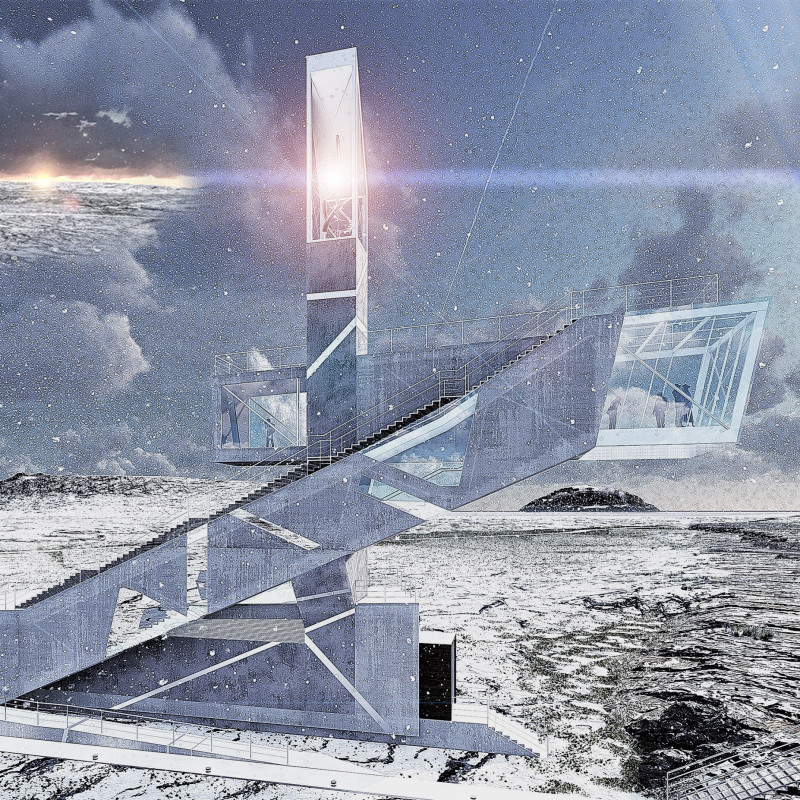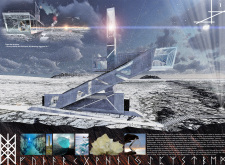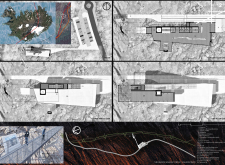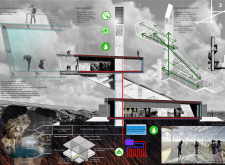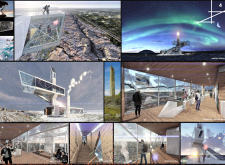5 key facts about this project
Design and Functionality
The project features a multi-level structure that prioritizes visual access to the landscape, particularly for observing phenomena such as the Northern Lights. At the heart of the design is the observatory tower, which serves as the primary vantage point. This structure is characterized by its angular form and extensive use of glass, promoting transparency and fostering a connection with the external environment.
Supporting the main tower are various learning and exhibition spaces designed for educational purposes. These areas are adaptable, encouraging community engagement through workshops and interactive displays aimed at presenting local cultural and ecological narratives. The circulation pathways within the building are designed for fluidity, allowing visitors to explore all levels while maintaining accessibility throughout the year.
Sustainable Design Strategies
The floating structure incorporates several sustainable design strategies that set it apart from typical projects. Solar energy is harnessed through integrated photovoltaic panels, which are crucial given the region's long daylight hours. The utilization of geothermal energy for heating is another important aspect, reflecting Iceland's natural geothermal resources. Additionally, the project includes a rainwater harvesting system, effectively managing water resources and minimizing ecological impact.
Material Selection
The careful selection of materials plays a significant role in the design and sustainability of the project. Extensive use of glass creates a visual connection with the surroundings, while steel is employed for structural integrity. The interior features warm wooden finishes to create inviting environments, contrasting with the external landscape's ruggedness. Aluminum is used in the curtain wall system, contributing to both aesthetic appeal and lightweight structural requirements.
Innovative Features
The Floating Solarstein incorporates unique design approaches that distinguish it from similar projects. It adapts to seasonal variations, enriching visitor experiences based on changing environmental conditions. Interactive installations engage the public, enhancing educational opportunities and fostering connections to the natural world. The integration of local geological features into the design enhances cultural significance, providing a richer context for visitors.
Explore the project presentation for further details on its architectural plans, sections, designs, and innovative ideas. Discover how architecture can create meaningful, engaging spaces that harmonize with their environment.


